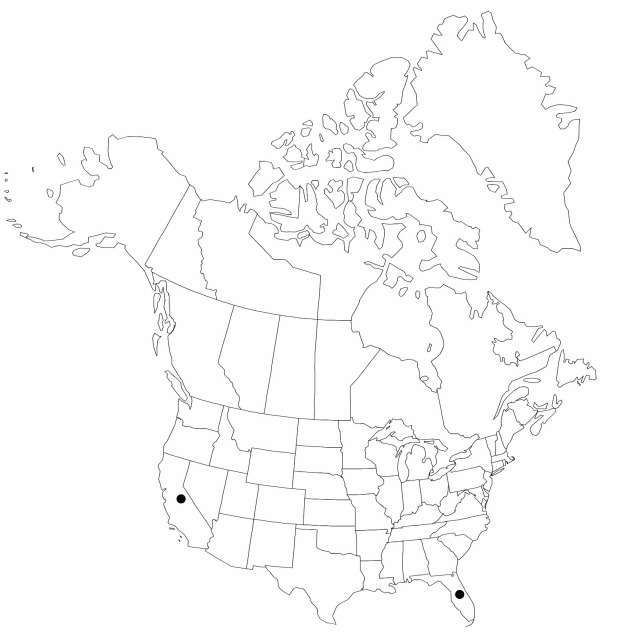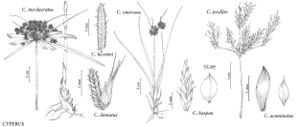Difference between revisions of "Cyperus prolifer"
in J. Lamarck and J. Poiret, Tabl. Encycl. 1: 147. 1791.
FNA>Volume Importer |
FNA>Volume Importer |
||
| Line 26: | Line 26: | ||
|elevation=0–200 m | |elevation=0–200 m | ||
|distribution=Calif.;Fla.;tropical e Africa. | |distribution=Calif.;Fla.;tropical e Africa. | ||
| − | |discussion=<p>Cyperus prolifer has long been cultivated in fish ponds and water gardens and has been reported under the name C. isocladus.</p> | + | |discussion=<p><i>Cyperus prolifer</i> has long been cultivated in fish ponds and water gardens and has been reported under the name C. isocladus.</p> |
|tables= | |tables= | ||
|references= | |references= | ||
| Line 51: | Line 51: | ||
|publication year=1791 | |publication year=1791 | ||
|special status= | |special status= | ||
| − | |source xml=https://jpend@bitbucket.org/aafc-mbb/fna-data-curation.git/src/ | + | |source xml=https://jpend@bitbucket.org/aafc-mbb/fna-data-curation.git/src/8f726806613d60c220dc4493de13607dd3150896/coarse_grained_fna_xml/V23/V23_232.xml |
|genus=Cyperus | |genus=Cyperus | ||
|subgenus=Cyperus subg. Pycnostachys | |subgenus=Cyperus subg. Pycnostachys | ||
Revision as of 17:06, 18 September 2019
Herbs, perennial, cespitose, rhizomatous. Culms trigonous to terete, 20–100 cm × 2–6 mm, soft (flattened in drying), glabrous, often flopping over and rooting at base of rays. Leaves: blades reduced to sheath. Inflorescences: rays 100–250, 5–16 cm; 2d order rays 0.5–5 cm; bracts 2–3, horizontal or reflexed, 4–12 cm × 1.5–4 mm. Spikelets 1–30, linear-lanceoloid, ellipsoid to narrowly ovoid, compressed-quadrangular, 6–17 × 1–1.5 mm; floral scales 5–12, reddish brown, 1–3-ribbed, 1.2–1.7 × 0.7–0.9 mm, apex mucronulate. Flowers: stamens 3; anthers 1–1.2 mm; styles 0.3 mm; stigmas 1–1.3 mm. Achenes brown, obovoid, 0.4 × 0.2 mm, base stipelike to nearly cuneate, apex obtuse, surfaces finely reticulate.
Phenology: Fruiting summer.
Habitat: Pond shores, marshes
Elevation: 0–200 m
Distribution

Calif., Fla., tropical e Africa.
Discussion
Cyperus prolifer has long been cultivated in fish ponds and water gardens and has been reported under the name C. isocladus.
Selected References
None.
